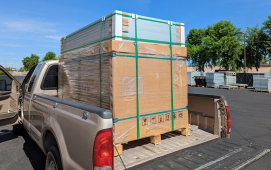@SoloCon I think you have received some good advice and suggestions so far.
To your last question, I don't think you can go wrong with the listed options as long as they first and foremost fit the area that SanTan is diagraming out for you. Some observations and thoughts from a DIY who has installed a few systems and built a couple battery banks.
1- Panel orientation is key - from the earlier roof pics. your panels seem to be facing at least three different directions. So production numbers will not be the same as if they were all facing south throughout the year. You will need to take that into consideration otherwise you will be disappointed.
2 - Roof mount - make sure you know what you are doing when making a penetration in your roof. Water can be a killer to the structure if you do not flash, seal properly. Not to mention it is extremely dangerous if you are not good with heights and do not take precautions. I have installed both, roof and ground mount, and would take ground mount over roof any day unless you do not have the land. 50lb panels at this size are not easy to handle and assume a min. of 2nd person to help install if you plan to do this yourself.
3 - Solark - Very good inverter. i have the 12k, and for what you want to do it would be an ideal choice. Especially when it comes to future proofing. Some users mentioned utilities reneging on their net metering deal or reducing the credit, the sol-ark would provide a level of insurance in allowing you to beef up a battery bank to increase self consumption. Quick personal story - A friend had a $35k grid-tie system put in and their sump pump dies 9 months later. He complained that they were unable to use the $35k system as a backup and ended up spending $9k on a new backup generator. If they had a sol-ark installed upfront he could of just bought 20-30kw of batteries as back up instead as a new emergency back up and improve self-consumption. All possible through programing and critical loads options the inverter offers.
<edit> I would add that if your goal is to still be tied to the grid I would not purchase 2 15k sol-arks initially, just one. I would instead use that money for either panels / batteries. The extra inverter would be wasteful at this point from what you have shared and you would get more bang for your buck in other areas of your system. The beauty of the Sol-Arks is that adding a 2nd one is straight fwd., just make sure you leave space in your mech. room for it.




